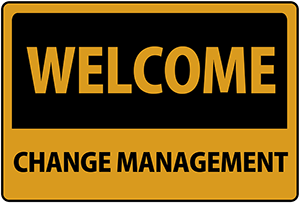By Susie Schroeder
Section 232 of the Trade Expansion Act allows the President to impose tariffs on imports into the United States if the US Secretary of Commerce feels that import volumes of the item impact the national security – excessive imports of an item with little domestic production would make it difficult for the country to be self-sufficient if the item was needed to fight conflicts or for warfare.
The premise of the law is that it attempts to regenerate domestic production of certain items or industries in order to ensure there is enough in-country availability. The law has only been used twice before – in 1979 on crude oil from Iran and in 1982 against crude oil from Libya – both were fairly short lived.
The US steel industry essentially died in the 1980’s due to overproduction even while price and duty protections were implemented by the Carter and Reagan administrations. When the steel mills could no longer compete and government subsidies were no longer available, many plants were shuttered. Aluminum was dealt a different hand as it survived domestic production until the early 2000’s when the availability of power in relation to cost shut down all but one mill in the US. Additionally, the slow death of many manufacturing industries had decreased the domestic need for steel and aluminum and foreign sourcing became the trend to effect lower cost goods. These factors shifted the guidance of long term job growth – parents started encouraging their children to go to college and get desk jobs. Mills and factory work were no longer viable options for many.
In 2018, after an investigation by the Secretary of Commerce, President Trump exercised his right to enact the 232 law and, after a brief public comment period, it went into effect very quickly. Many companies scrambled to adjust their supply chains to a domestic source. For steel that wasn’t domestically available, or wasn’t available in the quantities required to maintain adequate production, companies were forced to scurry down the rabbit hole of applying for an exclusion from the Bureau of Industry and Security.
Even long-time trade professionals struggled to advise their sourcing counterparts on the process. The instructions provided to request exclusions weren’t entirely clear or lacked specific fields to explain the variations in the steel and aluminum required for the performance of the finished good. At times, the submission process felt like a black hole as the import community sometimes waited up to a year to receive a decision – meanwhile paying the 10 and 25 percent duties on their imports of steel and aluminum and adding another layer of uncertainty to their finished good costs and supply chains. Emails to the CBP’s Trade Remedy mailbox, the CEE’s and the BIS’s steel and aluminum trade remedy emails were often unanswered or unclear in direction.
Commerce rejected thousands of exclusion applications due to errors in the submission, or rejected solely on the basis of an objection of a domestic supplier without investigation into their capabilities to produce, and finally Commerce did not effectively have the resources to provide decisions within the established guidelines, prompting a backlog of close to 30K requests. Even then, when an exclusion was approved, it was then turned over to Customs and Border protection to interpret the exclusion against a pending import with sometimes unfavorable results. If the approved exclusion’s wording, which was input by Bureau of Industry and Security, did not match the mill certificate exactly, it was denied upon import leaving importers on the hook for the extra cost.
In September 2020, the Government Accountability Office published a report criticizing the exclusion process and economic impact reviews. Three recommendations were given; 1) identify, analyze and respond to factors in the process that may cause submission errors, 2) take steps to improve timeliness of exclusion request decisions and address the backlog, and 3) assign responsibility for reviewing the tariffs impact and document the results.
Members of the import community rejoiced. Finally – validation that we weren’t all just a bunch of whiners or that we didn’t know what we were doing. We were authentically struggling with a system that wasn’t well established prior to being thrust into the everyday process of importing goods and the government acknowledging its own missteps. And while I don’t think this will immediately resolve the submission process, it will hopefully create an outlet for validation and further review for importers…and give us back some power to navigate the somewhat flawed process until it is hopefully improved.
Sources:
Talton, J. (2018). How the American steel industry nearly committed suicide — and not from trade. The Seattle Times. Retrieved from https://www.seattletimes.com/business/economy/how-the-american-steel-industry-nearly-committed-suicide-and-not-from-trade/
Home, A. (2017). Can Trump resurrect U.S. aluminum, and who killed it anyway? [Ebook] (1st ed.). London: Reuters. Retrieved from https://www.reuters.com/article/us-us-aluminium-ahome/can-trump-resurrect-u-s-aluminum-and-who-killed-it-anyway-andy-home-idUSKBN19Y24R
Congressional Research Service. (2020). Section 232 of the Trade Expansion Act of 1962 [Ebook] (1st ed.).
Government Accountability Office. (2020). Steel and Aluminum Tariffs: Commerce Should Improve Its Exclusion Request Process and Economic Impact Reviews [Ebook] (1st ed.).
